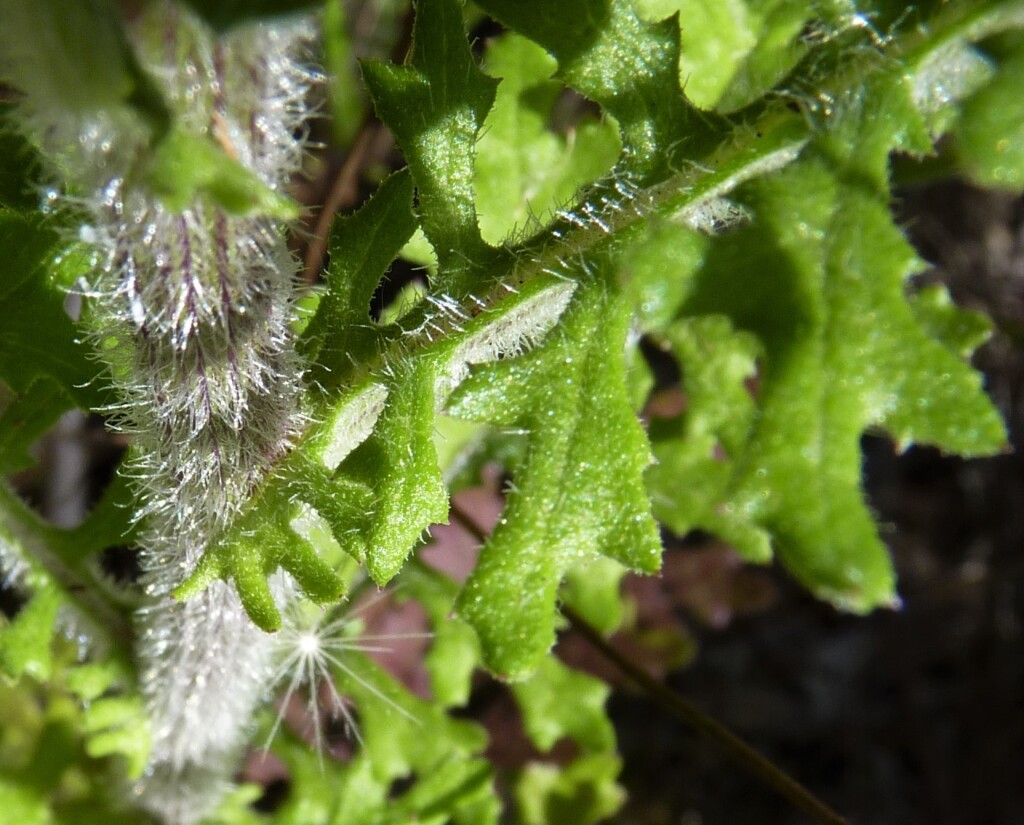Senecio bathurstianus
(DC.) Sch.Bip.Erect annual to 1.5 m high; stems ± densely coarse-hairy, density reducing upwards, rarely ± glabrous. Leaves sessile, auriculate, with remotely denticulate or dentate margins, coarse-hairy; lower surface green or tinged purple, sometimes with cobwebby overlay; mid-stem leaves pinnatisect to subpinnatisect, broad-elliptic to elliptic in outline, 7–15 cm long, 1–5.5 cm wide; upper leaves pinnatisect or sometimes linear. Inflorescence corymbose, typically with c. 50–200 capitula; capitula non-radiate; involucre plumply cylindric or narrowly campanulate (same width as height), 3.5–6.0(–7.0) mm long, glabrous; bracts (9–)11–13; bracteoles present; florets 20–35, bisexual and female. Cypselas cylindric, 1.5–2.0 mm long, red-brown or blackish, papillose-hairy in lines or ± scattered; pappus of slender hairs, 4–5 mm long, deciduous. Flowers mostly Oct.–Dec.
LoM, MuM, Wim, VVP, VRiv, GipP, Gold, CVU, GGr, DunT, NIS, EGL, EGU, HSF, HNF, VAlp. Also Qld, NSW, ACT. Moderately common in drier, often rocky sites through the range of the species (e.g. Wyperfeld National Park, Grampians, Strathbogie Ranges, Sunbury, Warby Range, upper Snowy and Genoa River valleys).
Similar to Senecio hispidulus which has less dissected leaves and has stems and leaves more densely coarse-hairy, capitula usually with more florets, and cypselas with papillose hairs more scattered (Thompson 2004a). Senecio glomeratus has similar-sized capitula and leaf dissection sometimes approaching that of S. bathurstianus, but the latter has calycular bracteoles shorter and fewer, and not cobwebby at anthesis (Thompson 2004a).
Walsh, N.G. (1999). Senecio. In: Walsh, N.G.; Entwisle, T.J., Flora of Victoria Vol. 4, Cornaceae to Asteraceae, pp. 941–965. Inkata Press, Melbourne.
 Spinning
Spinning

